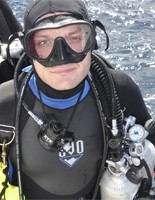PRK (Photorefractive Keratectomy) & LASEK
- Advanced surface treatment to correct shortsightedness, farsightedness and astigmatism
- An option in those with thin corneas
- Useful in those with corneal scars
- Useful for low levels of correction
Photorefractive Keratectomy (PRK) and Laser Sub-epithelial Keratectomy (LASEK) are advanced surface laser eye surgery procedures that are extremely good for low levels of refractive error: nearsightedness, farsightedness and astigmatism.
Procedures are performed by treating the surface of the cornea directly without creation of a corneal flap like the one created with a femtosecond laser in Lasik laser eye surgery. The same Teneo excimer laser is used to change the shape of the cornea.
At Centre for Sight, PRK laser eye surgery is advised when there are abnormalities of the corneal epithelium, thin cornea, scarring of corneal tissue and resulting surface irregularity). It is sometimes performed after cataract surgery in patients who have some remaining refractive error.

“Their passion and deep interest in their work gives a patient like me even more confidence.”
James Webb
Centre for Sight Patient
We at Centre for Sight further differentiate ourselves from other centres by the following:
- NOT using Mitomycin C. This is a toxic anti-scarring agent licensed for use as an anti-cancer drug. It works by denaturing DNA and is classed as a “radiomimetic” – in other words like radiotherapy and can thus potentially cause problems long term.
- Where possible Transepithelial PRK surgery is preferred – a minimally invasive “no-touch” procedure.
What is Transepithelial PRK (Transepi-PRK) laser eye Surgery ?
This is a single step “no-touch” process where the laser both removes the epithelial layer and changes the corneal shape. This results in less pain than LASEK, along with enhanced precision and a faster recovery of the patient’s eyesight.
The design, development and study of this Transepi-PRK option on the Bausch & Lomb Teneo excimer laser was performed at Centre for Sight. Teneo Transpeithelial PRK is being used with considerable enthusiasm by fellow ophthalmologists world-wide. Centre for Sight is pleased to have been so integrally involved in this technique that is of such great benefit to patients.
What is LASEK?
LASEK (Laser-Assisted Sub-Epithelial Keratectomy) is a derivative of Photorefractive Keratectomy (PRK) whereby the epithelium is loosened with 20% alcohol. In LASEK the epithelium flap (rather than a corneal flap in LASIK) is dislodged and put to one side (instead of being discarded) and then replaced after the excimer laser treatment. It has been suggested that LASEK is less painful than PRK and less likely to produce long-term corneal haze. This has not been proven to be true, and certainly not in our experience at Centre for Sight. But the procedure is popular, especially at centres on the high street.
Following both PRK procedure and LASEK laser vision correction procedures, a contact lens is used and removed 5 days after treatment.
What to expect after PRK ?
Both PRK and LASEK laser eye procedures are more uncomfortable than LASIK eye surgery or IntraLASIK femtosecond laser eye surgery. Initially vision is good and as the epithelium heals and meets in the middle of the cornea, distance vision deteriorates for a day or two and then recovers again soon after which the contact lens is removed. In comparison to Lasik treatment, visual recovery can take a few days to a week, compared to only one day with IntraLASIK.
PRK eye surgery and LASEK can be performed on both eyes on the same day, but you will not be able to work or function properly for up to a week.
Risks of PRK and LASEK
Like other refractive eye procedures including Lasik, with careful patient selection through the thorough consultation process, the risk of complications and adverse events is very low and if any occur will be treated and monitored by consultant eye surgeons at Centre for Sight.
Dry eye
Like Lasik flap procedures dry eye can occur with photorefractive keratectomy laser surgery but is typically less severe and for a shorter duration. The condition is a result of nerve endings being lasered. With recovery and nerve regeneration, sensation returns and dry eye improves.
Corneal haze
This is a fine haze sometimes seen on the cornea at about 6 weeks and typically recedes over the following 6 weeks. With modern low energy excimer lasers and low levels of laser correction, this is not seen as often. To avoid haze some surgeons (no refractive surgeon at Centre for Sight) use Mitomycin C described above.
Infection
In the early postoperative period, the eye is at a slightly higher risk of infection than Lasik laser eye surgery. This is because the top protective epithelium needs to regenerate. It is important that patients maintain good hygiene and follow instructions provided by staff at the Centre.
Author Information
Authored by Sheraz Daya MD FACP FACS FRCS(Ed) FRCOphth, Consultant Ophthalmic Surgeon & Medical Director, June 2019.
Next review due June 2024.
I understand that all my data, clinical and otherwise will be protected under GDPR. I understand my data may used for the purposes of quality improvement and advancement of eye care such as audit. This is a component of good clinical governance and measures will be taken to ensure my data is not identifiable.
